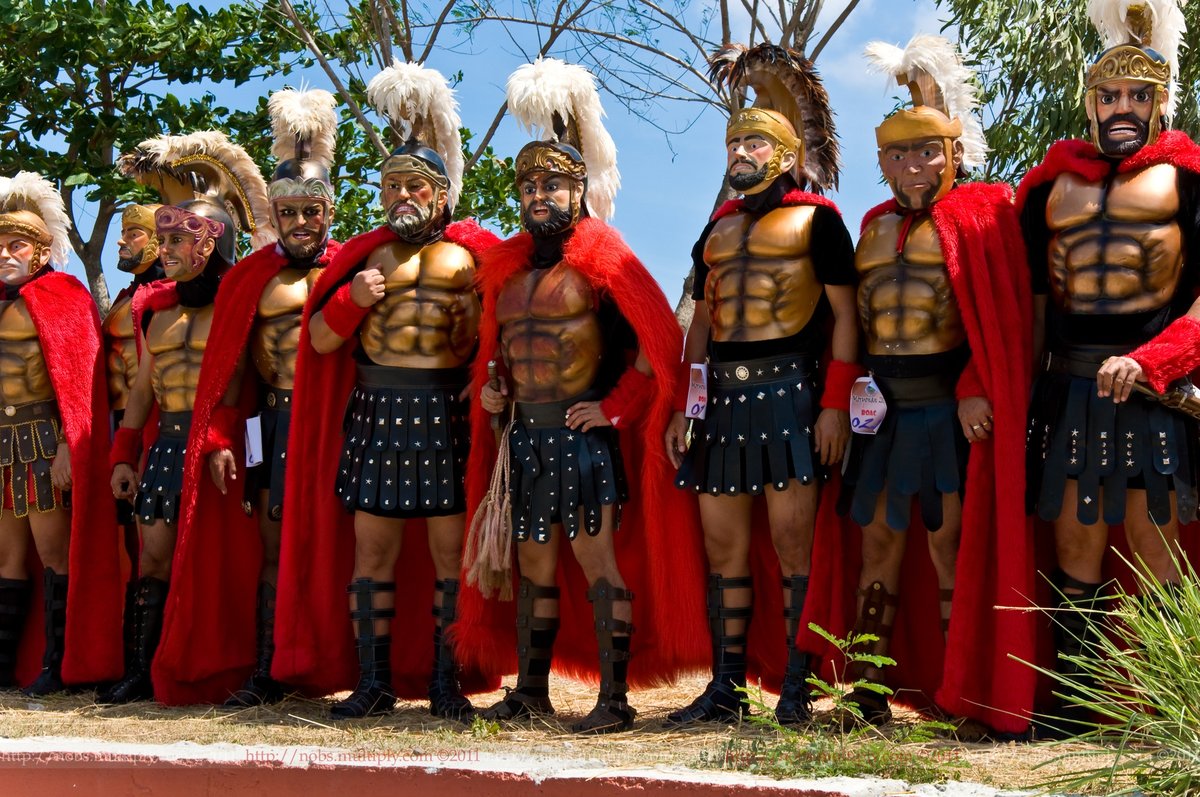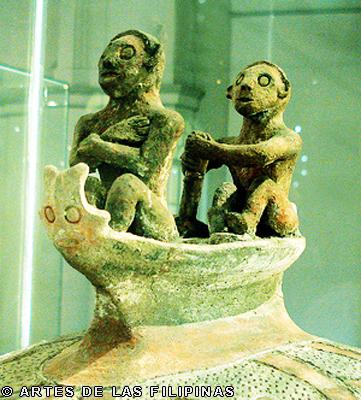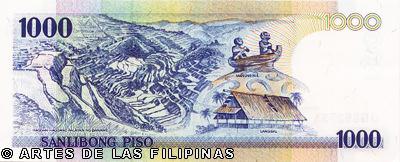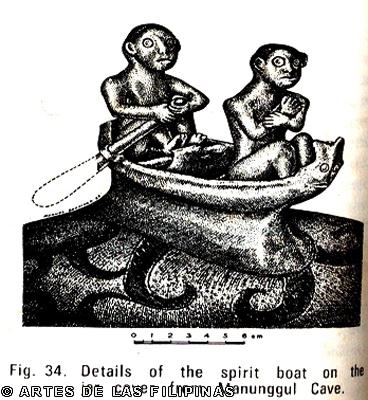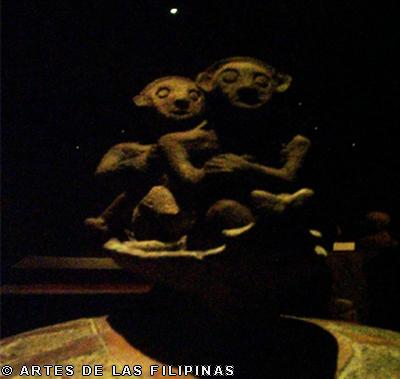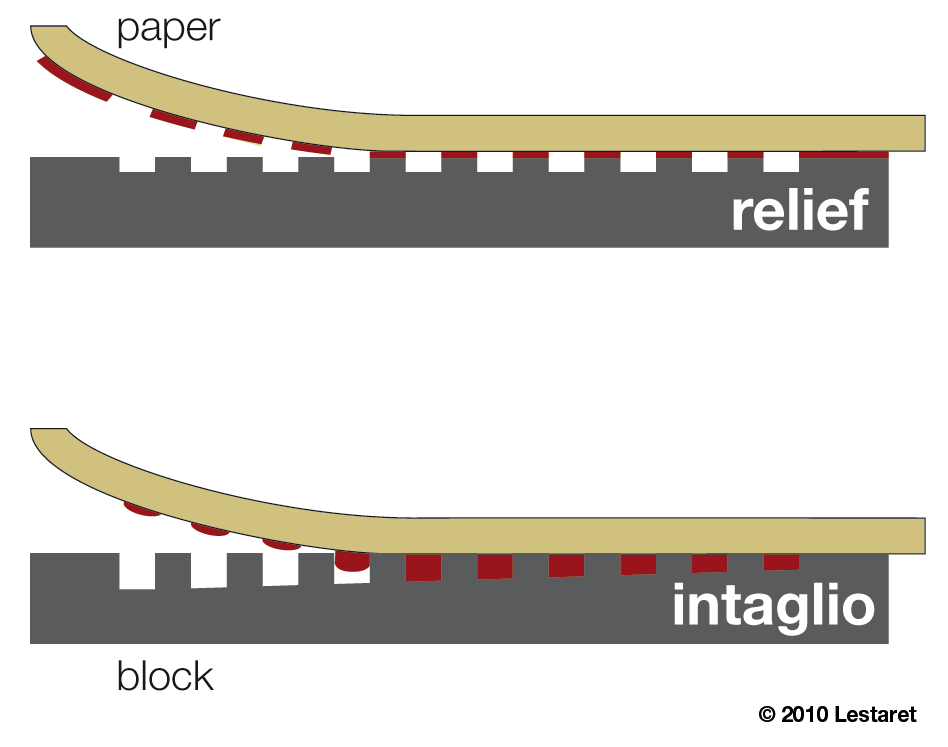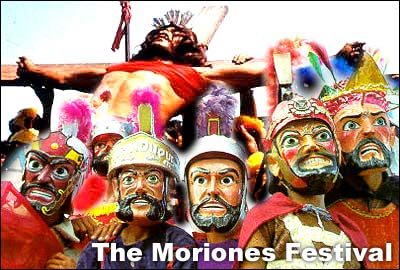 The Moriones is an annual festival held on Holy Week on the island of Marinduque, Philippines. The "Moriones" are men and women in costumes and masks replicating the garb of biblical Roman soldiers as interpreted by local folks. The Moriones or Moryonan tradition has inspired the creation of other festivals in the Philippines where cultural practices or folk history is turned into street festivals.
The Moriones is an annual festival held on Holy Week on the island of Marinduque, Philippines. The "Moriones" are men and women in costumes and masks replicating the garb of biblical Roman soldiers as interpreted by local folks. The Moriones or Moryonan tradition has inspired the creation of other festivals in the Philippines where cultural practices or folk history is turned into street festivals.
Colorful festivals celebrated on the island of Marinduque and the Philippines. Morion means "mask" or "visor," a part of the medieval Roman armor which covers the face. Moriones, on the other hand, refers to the masked and costumed penitents who march around the town for seven days searching for Longinus. Morions roam the streets in town from Holy Monday to Easter Sunday scaring the kids, or engaging in antics or surprises to draw attention.
This is a folk-religious festival that re-enacts the story of Saint Longinus, a Roman centurion who was blind in one eye. The festival is characterized by colorful Roman costumes, painted masks and helmets, and brightly colored tunics. The towns of Boac, Gasan, Santa Cruz, Buenavista and Mogpog in the island of Marinduque become one gigantic stage. The observances form part of the Lenten celebrations of Marinduque.
The various towns also hold the unique tradition of the pabasa or the recitation of Christ's passion in verse.Then at three o'clock on Good Friday afternoon,
the Santo Sepulcro is observed, whereby old women exchange verses based on the Bible as they stand in wake of the dead Christ.
One of the highlights of this festival is the Via Crucis. A re-enactment of the suffering of Christ on his way to the calvary. Men inflict suffering upon themselves by whipping their backs, carrying a wooden cross and sometimes even crucifixion. They see this act as their form of atonement for their sins. This weeklong celebration starts on Holy Monday and ends on Easter Sunday.
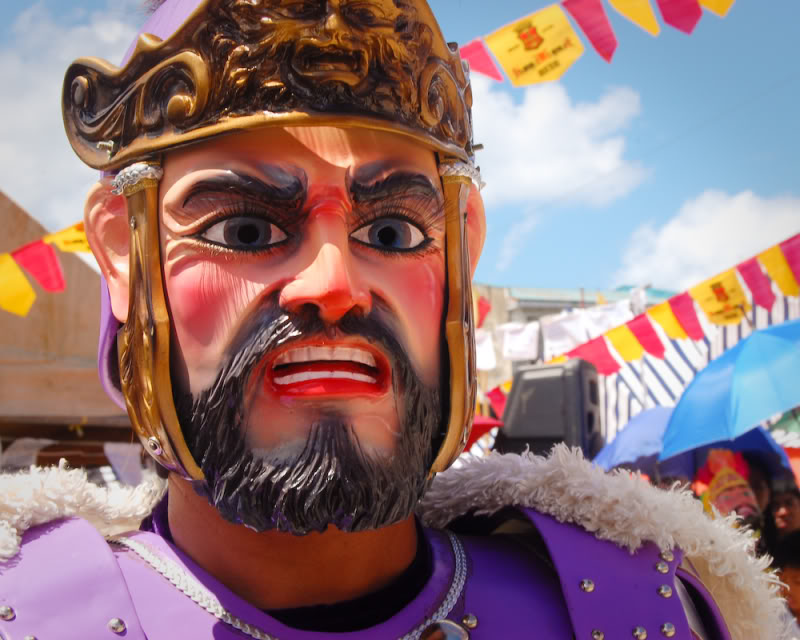
http://philtimes.files.wordpress.com/2011/04/moriones-34.jpg
in the Philippines, Holy Week is observed with a fervor that mixes serious reverence leaning toward traditional Catholic practices on one hand and folk-beliefs bordering on the mystical, on the other hand. It is also a time for somber, self-imposed retreats; for leisurely out-of-town drives; planned family vacations; or cherished visits to the individual's home province (Maundy Thursday and Good Friday are national holidays; a four-day weekend).
And it is on this season that Marinduque becomes the focus of attention that spans the whole week.
For it is the time of the moriones.Once again, in a tradition that have been annually practiced for more than a hundred years now, men called morions (some are women, if you can discern the difference) appear on the six towns of Marinduque. These colorful characters, a parody of Roman soldiers during the time of Christ, are costumed in articles fashioned from clothes to shells, weaves of nito-vines and other indigenous materials limited only by the creativity of its maker. Fierce-looking, often bearded masks of handcarved wood or paper-mache topped by a helmet adorned with multi-hued paper flowers complete the typical morion garb. Painted wooden swords, spears, and shields are considered basic paraphernalia. For a whole week, these pesky figures populate the town's streets: engaging in mock swordfights, playing pranks on children, marching or dancing in groups, doing antics or springing surprises for everyone while safely hiding their identity behind their mask.
Beneath the exterior glee, the man behind the seemingly vexing morion is actually fulfilling a vow of penance or thanksgiving or is performing a numinous act of self-cleansing. Those unending walks under the sweltering heat of the summer sun, burdened by the leaden headgear, stifling behind the thick, suffocating mask, with a restricted vision limited to only tiny two holes, sweating inside their hot and cumbersome costumes, the hunger and thirst, and after a long, humid day - joining the early evening religious procession during Holy Wednesday and Good Friday still in their burdensome gears; these are all silently endured as a form of spiritual sacrifice.
Traditionally, the morion's real identity is kept secret, even to his immediate family. The mask and his costume is prepared painstakingly and discreetly months or even years before he actually wears it.
The practice, as research points out, originated in the town of Mogpog circa 1880s. Father Dionisio Santiago, the local parish priest during that time, is credited to have started it as a means of focusing the attention of his parishioners to Lenten religious activities.
The reverend took a byline from the Bible and developed this into a side-story that artfully interweaves itself into the Passion and Resurrection of Christ. The storyline centers on Longino, the Roman centurion who speared the side of the Crucified Christ. "...and at once blood and water poured out" (John, Chapter 19, Verse 34) of the Wound, a drop of which fell on the blind eye of the centurion, miraculously restoring his partial vision and partially, his faith. Longino, on orders of the Roman High Council, was ordered to command the soldiers assigned to guard the tomb of Christ. And he became fully converted when he witnessed the Resurrection of Christ. On that first Easter dawn, he ran around the town narrating what he saw, proclaiming that Christ is indeed the Son of God!
This is where the real fun starts, perfectly timed in Marinduque for its brand of Easter Sunday celebration.
On orders of "Pontious Pilate," all of the town's morions look for Longino to capture and behead him, putting to a stop his spreading the news of the Resurrection. The Roman centurion learns about the plot against him and begins eluding his fellow morions playing captors not to escape punishment but to gain a little more time in spreading the truth and his newly-found faith.
The Habulan or mad chase for Longino begins. Playing antics while running in chaotic circles around the town to elude his captors; in the market, hiding inside houses, fording rivers, climbing trees, losing himself in the crowds or even using the watching crowds as a shield between himself and his perplexed morion pursuers delight the spectators no end. Oftentimes, the onlooker unwittingly becomes a participant of this comedy-drama as he tries to help hide the hapless Longino that by now has become the 'darling of the crowd.
Longino is captured twice but is able to escape with the crowd's resounding roar of approval. On third time, realizing that he has made the world know that "Christ, the son of God, has risen," he bravely accepts his fate in the final act called Pugutan or mock beheading usually timed right before high noon. After asking his newly found Savior's forgiveness, he voluntarily lowers his head into the chopping block and his head is decapitated by another morion called the berdugo (executioner). His "lifeless" body is paraded around the town for his "funeral" that leads to the church where all morions rededicated this year's Lenten vow to God.
http://www.marinduque.gov.ph/moriones.html
